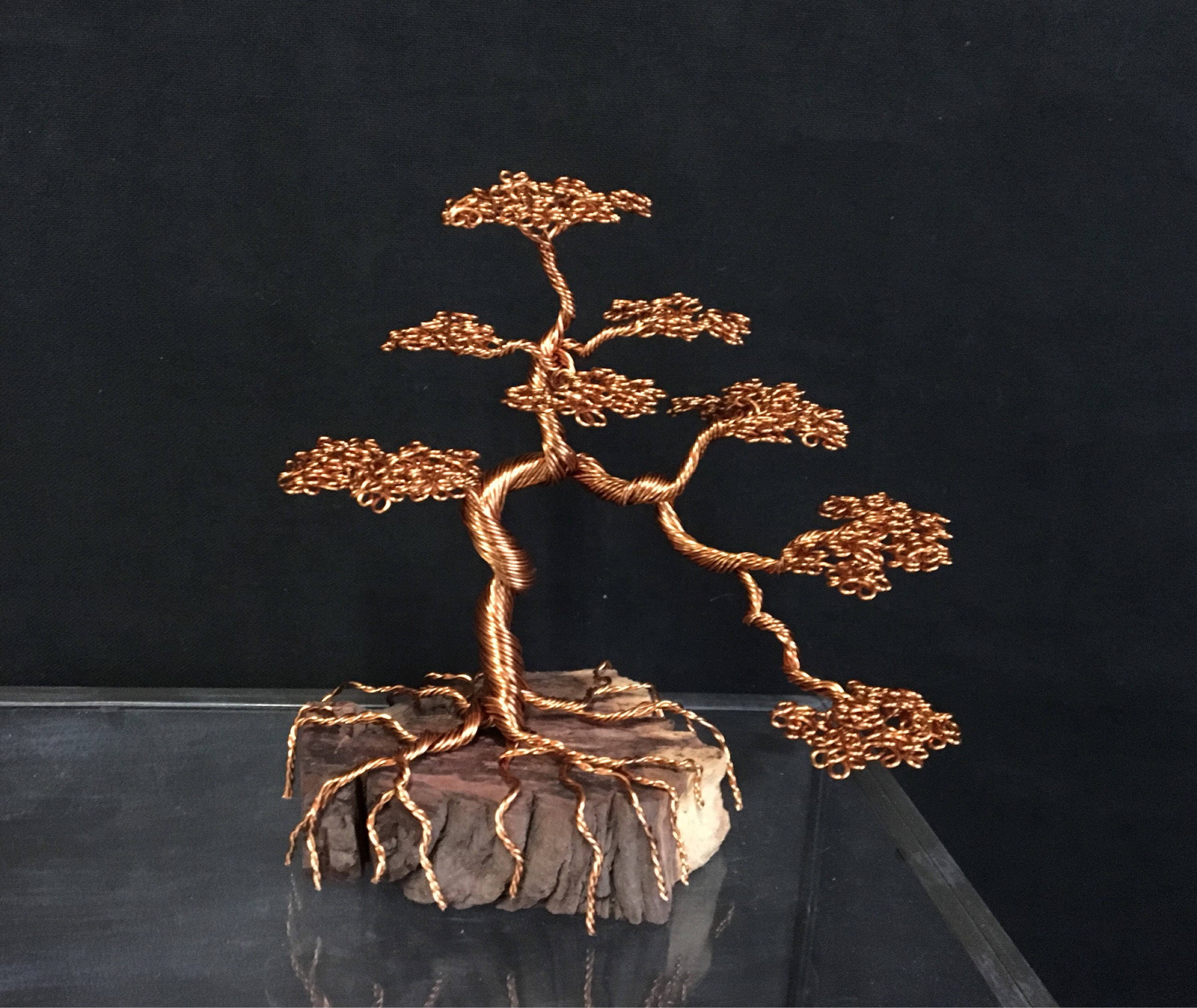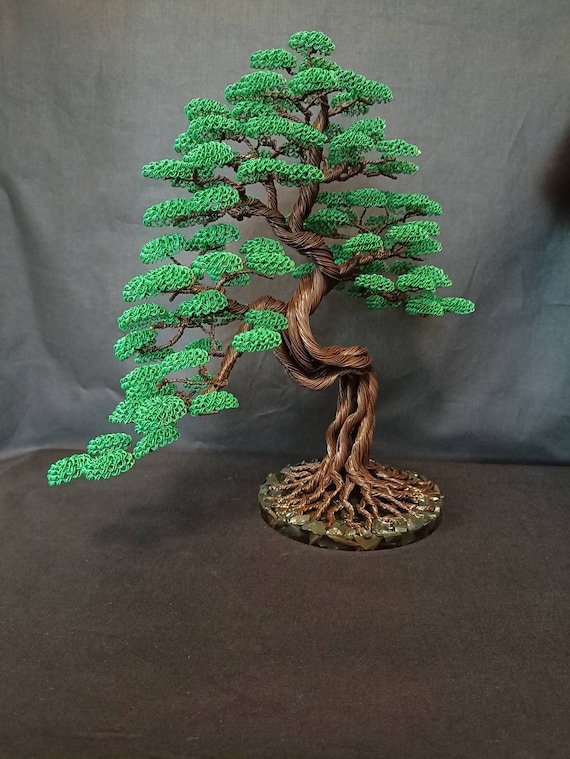Bonsai sculpture is the art of cultivating miniature trees in containers. It requires skill, patience, and creativity.
Bonsai sculpture blends horticulture with artistic expression. Gardeners prune and shape trees to mimic their larger counterparts. This ancient practice originated in China and was refined in Japan. Enthusiasts use wires and trimming techniques to craft intricate designs. Each bonsai tells a story, reflecting seasons and time.
These living sculptures offer tranquility and a deeper connection to nature. Bonsai artistry can be a meditative and rewarding hobby. Beginners can start with hardy species like junipers or ficus. With dedication, anyone can master this timeless art form.
Introduction To Bonsai Sculpture
Bonsai sculpture is a beautiful art form. It involves growing miniature trees in containers. This practice has deep roots in history and culture. Bonsai artists shape these tiny trees to resemble full-sized trees in nature. Each bonsai tells a story and evokes emotions. The process requires patience, skill, and a deep understanding of nature.
Origins And History
Bonsai originated in China over a thousand years ago. The Chinese called it “Penjing”. They used it to recreate natural landscapes in miniature form. Japanese monks later adopted the practice. They refined it into what we know as bonsai today. The word “bonsai” means “planted in a container” in Japanese. This art spread to the West in the 19th century.
Philosophy And Principles
Bonsai sculpture is more than just gardening. It embodies a philosophy of harmony and balance. The main principles include:
- Naturalness: The tree should look natural and unforced.
- Balance: The composition should be balanced and pleasing.
- Proportion: The tree should be in proportion to its container.
- Age: The tree should appear aged and weathered.
Each tree represents a deep connection with nature. Bonsai teaches patience and respect for life. It encourages mindfulness and attention to detail. Creating a bonsai is a meditative process. It allows the artist to express their vision and creativity.
Choosing The Right Tree
Choosing the right tree is crucial for creating a beautiful bonsai sculpture. The right species will determine the success of your bonsai project. Consider these factors and species for the best results.
Popular Bonsai Species
Some species are more suited for bonsai sculptures. Here are some popular choices:
- Ficus – Known for its flexibility and ease of care.
- Juniper – Ideal for beginners with its hardy nature.
- Maple – Offers vibrant, seasonal color changes.
- Pine – Represents longevity and endurance.
- Cherry Blossom – Famous for its delicate, beautiful flowers.
Factors To Consider
Several factors should guide your choice of a bonsai tree. These include:
| Factor | Details |
|---|---|
| Climate | Choose a tree that suits your local climate. |
| Space | Ensure you have enough space for the tree to grow. |
| Experience Level | Beginners should opt for easier species like Juniper. |
| Maintenance | Consider how much care and attention the tree needs. |
By understanding these factors, you can select the best tree for your bonsai sculpture. A well-chosen tree will flourish and become a beautiful bonsai.
Basic Tools And Materials
Creating a beautiful bonsai sculpture requires certain tools and materials. These essentials help you shape and nurture your bonsai. Let’s explore the basic tools and materials you need.
Essential Tools
To start with bonsai sculpture, you need some essential tools. These tools help you trim, shape, and care for your bonsai.
| Tool | Purpose |
|---|---|
| Bonsai Scissors | For precise trimming of branches and leaves. |
| Concave Cutters | For cutting branches without leaving marks. |
| Wire Cutters | For cutting training wires without damaging the tree. |
| Root Rake | For untangling roots and preparing for repotting. |
| Watering Can | For gentle watering to avoid soil erosion. |
Choosing The Right Soil
Selecting the right soil is crucial for your bonsai’s health. The soil mix affects water retention and root growth.
- Akadama: A type of clay that retains moisture well.
- Pumice: Helps with drainage and aeration.
- Lava Rock: Provides good drainage and prevents compaction.
- Organic Compost: Adds nutrients to the soil.
A good soil mix usually contains a balance of these materials. This mix ensures your bonsai gets the right amount of water and nutrients.
Techniques For Shaping Bonsai
Bonsai sculpture is an ancient art form that involves shaping miniature trees. To master this art, you need to learn various techniques. These techniques help you create beautiful and intricate bonsai designs.
Pruning Methods
Pruning is a fundamental technique in bonsai sculpture. It involves carefully cutting branches and leaves. The goal is to maintain the desired shape and size of the tree.
There are several types of pruning methods:
- Maintenance Pruning: This method removes unwanted growth. It helps the tree maintain its shape.
- Structural Pruning: This method shapes the tree’s main structure. It involves removing larger branches.
- Pinching: This involves using your fingers to remove new growth. It encourages denser foliage.
Wiring Techniques
Wiring is another essential technique for shaping bonsai. It involves wrapping wire around branches. This allows you to bend and position them.
Different types of wires are used for wiring bonsai:
| Wire Type | Best For |
|---|---|
| Aluminum Wire | Beginner use, flexible and easy to work with. |
| Copper Wire | Experienced use, strong and holds shape well. |
Here are steps for effective wiring:
- Choose the right wire thickness.
- Wrap the wire around the trunk or branch.
- Gently bend the branch into the desired position.
- Check the wire regularly to avoid damage.
Remember, both pruning and wiring are vital for bonsai sculpture. They help you create stunning, miniature trees.
Watering And Feeding
Caring for a bonsai sculpture involves proper watering and feeding. These tasks ensure your bonsai remains healthy and vibrant. Understanding the specific needs of your bonsai is crucial for its growth and longevity.
Watering Guidelines
Watering your bonsai sculpture is essential. Here are some key points to remember:
- Check the soil daily for dryness.
- Water deeply until water drains from the pot’s bottom.
- Ensure the soil remains moist but not waterlogged.
- Adjust watering frequency based on the season and climate.
- Morning is the best time to water your bonsai.
Overwatering can be as harmful as underwatering. Keep an eye on the soil’s moisture levels.
Nutrient Requirements
Feeding your bonsai sculpture is important for its overall health. Here is a table outlining the nutrients your bonsai needs:
| Nutrient | Importance | Frequency |
|---|---|---|
| Nitrogen (N) | Promotes leaf growth | Monthly during growing season |
| Phosphorus (P) | Strengthens roots | Monthly during growing season |
| Potassium (K) | Improves overall health | Monthly during growing season |
Use a balanced bonsai fertilizer. Follow the instructions on the fertilizer package. Here are some tips for feeding your bonsai:
- Apply fertilizer during the growing season.
- Reduce feeding during the dormant season.
- Use liquid fertilizer for faster absorption.
- Avoid over-fertilizing to prevent nutrient burn.
Proper watering and feeding ensure your bonsai sculpture thrives. Regular attention to these tasks will keep your bonsai healthy and beautiful.

Credit: www.etsy.com
Pest And Disease Management
Maintaining the health of your bonsai trees is crucial. Proper pest and disease management ensures your bonsai remains vibrant. Learn how to protect your bonsai from common pests and diseases.
Common Pests
Bonsai trees can attract various pests. These pests can harm your tree.
- Aphids – Tiny insects that suck sap from leaves.
- Spider Mites – These pests cause yellowing of leaves.
- Scale Insects – Small, oval bugs that attach to stems.
- Caterpillars – They chew on leaves and stems.
Regularly inspect your bonsai for these pests. Use organic pesticides or insecticidal soap for treatment.
Disease Prevention
Prevention is key to a healthy bonsai. Follow these steps to prevent diseases:
- Watering – Avoid overwatering. It can lead to root rot.
- Air Circulation – Ensure good air circulation. It prevents fungal growth.
- Clean Tools – Always use clean tools. This stops disease spread.
- Quarantine New Plants – Keep new plants separate. Watch for any signs of disease.
Here’s a quick overview of common diseases and their signs:
| Disease | Signs |
|---|---|
| Powdery Mildew | White, powdery spots on leaves. |
| Root Rot | Soft, brown roots and wilting leaves. |
| Leaf Spot | Dark spots on leaves. |
Act quickly if you spot any disease signs. Trim affected parts and treat with fungicide if needed.
Displaying Your Bonsai
Bonsai sculpture is an ancient art form that captivates many. Displaying your bonsai can elevate its beauty and charm. Proper display enhances the aesthetic appeal and health of your bonsai.
Choosing A Display Location
Choosing the right display location is crucial for your bonsai’s health. Ensure the spot receives adequate sunlight. Avoid direct, harsh sunlight to prevent leaf burn. A spot with indirect light is ideal for most bonsais.
Consider placing your bonsai near a window with filtered light. This location provides the necessary light without causing damage. If your bonsai is an indoor type, a south-facing window works best.
| Bonsai Type | Ideal Light |
|---|---|
| Indoor Bonsai | Indirect Light |
| Outdoor Bonsai | Direct Morning Sun |
Seasonal Considerations
Seasonal changes affect your bonsai’s display needs. In summer, ensure your bonsai is shaded during peak sunlight hours. This helps prevent overheating and leaf burn. Use a shade cloth if necessary.
In winter, indoor bonsais need extra care. Keep them away from cold drafts and ensure they get enough light. Use grow lights if natural light is insufficient. Outdoor bonsais may require frost protection. Use mulch or a frost cloth to safeguard the roots.
- Summer: Provide shade during peak sunlight hours.
- Winter: Protect from cold drafts and frost.
Displaying your bonsai correctly ensures it remains healthy and beautiful. Choose the right location and consider seasonal changes. Your bonsai will thrive and become a stunning focal point in any space.

Credit: www.bonsaiempire.com
Advanced Styling Techniques
Advanced styling techniques in bonsai sculpture require patience and creativity. Mastering these techniques can turn your bonsai into a living work of art. This section will explore two key techniques: Creating Deadwood and Enhancing Aesthetics.
Creating Deadwood
Creating deadwood in bonsai adds an aged, natural look. It involves removing bark and treating the wood. This technique mimics the natural aging process of trees in the wild.
- Jin: This involves stripping bark to create dead branches.
- Shari: This involves removing bark along the trunk to expose wood.
Tools needed for creating deadwood:
| Tool | Purpose |
|---|---|
| Chisels | Removing bark |
| Brushes | Cleaning exposed wood |
| Lime Sulfur | Preserving and whitening deadwood |
Enhancing Aesthetics
Enhancing aesthetics involves improving the overall look of your bonsai. This can be achieved through pruning, wiring, and positioning.
- Pruning: Remove unwanted branches and leaves.
- Wiring: Shape branches by wrapping wire around them.
- Positioning: Place the bonsai in a way that shows its best side.
Key points to remember:
- Prune during the growing season.
- Use copper or aluminum wire for wiring.
- Check wire regularly to avoid damage.

Credit: www.etsy.com
Conclusion
Crafting bonsai sculptures is an art that brings nature into your home. These miniature trees offer tranquility and beauty. With patience and care, anyone can master bonsai sculpture. Start your journey today and transform your living space with these stunning, living artworks.
Embrace the serenity that bonsai trees provide.

